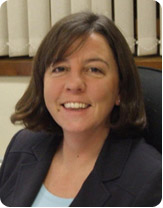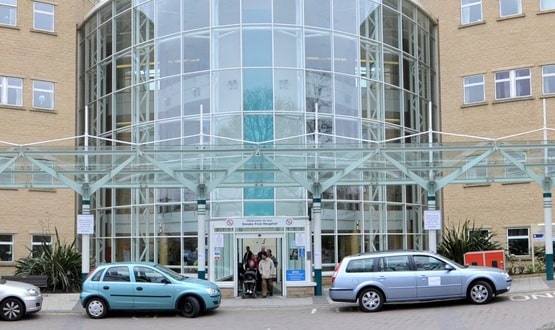Once more with feeling
- 17 November 2009
 |
|
Kate Grimes |
E-Health Insider editor Jon Hoeksma talks to Kate Grimes, chief executive of Kingston Hospital NS Trust, about being the first trust to go live with Cerner Millennium since the Royal Free.
After a series of stop and start delays, Kingston Hospital NHS Trust is preparing to go live with Cerner Millennium on 30 November. It’s a go-live critical to the future of the trust and the National Programme for IT in the NHS.
Fortunately, the project is being led by a chief executive who has done it all before. Most NHS chief executives don’t implement one hospital information system during their career. Kate Grimes, the boss at Kingston, is getting set for her third in four years.
Before taking the reins at Kingston, Grimes was chief executive at Queen Mary’s Hospital, Sidcup, which in quick succession installed first IDX and then Cerner in 2003-04.
Getting the system the trust needs
In an interview with E-Health Insider, Grimes says the QMS experience gave her “insight” into leading an IT modernisation project. This will be more than useful at Kingston, which is the first trust in London to try and implement the US system since things went badly wrong at Royal Free Hampstead NHS Trust.
The Royal Free’s problems lead to a series of fixes being implemented and an 18-month hiatus on Cerner implementations in the capital. So a lot rides on things going well this month.
Grimes says that when she took up post a year ago, Kingston had already done a huge amount of preparation. But after the Royal Free experience, past assumptions needed to be re-tested. “We took a clinical team to the Royal Free and the Homerton, and they re-affirmed that this is something we wanted to do.”
Grimes is very focused on getting the system her trusts needs. “We’ve got a green screen back office system right now, used mainly by administration staff,” she says. “We’re moving to a modern system with much more flexibility that will be used by clinicians in real time.”
She is also confident the hospital system will have an impact from day one: “At the moment, when clinicians want a test carried out they have to fill in a paper form and then get a paper test report back. With the new system, that will all be electronic and happen much more quickly. It’s a much safer process for patients.”
Grimes anticipates that Cerner Millennium will deliver many clinical benefits and enable new ways of working. At the same time, her immediate priority is to avoid disrupting existing workflows and processes. “We are focused on getting back to business as usual as quickly as possible, as it’s such a major change for the organisation and all 2,700 staff.”
Do it, do it again
Kingston had been planning to go live immediately after Royal Free, so it had already invested in its networks and staff training. Grimes says the subsequent delays have given it more time to prepare, but have also meant that staff have had to be retrained.
Kingston’s ‘CRS Command Centre’ occupies a big building on the hospital site, dedicated to “training people on the system they will be using.”
“We’ve also invested in a data centre, and in addressing technical issues in getting reports out of the system and in making sure staff are putting the right data into the new system,” Grimes says, while adding that Kingston has historically had very clean data.
Grimes says the main role of the chief executive in a major IT programme is to provide leadership. This means “making sure you have a strong programme and project management team and strong governance in place” but it also means “making sure everyone is involved and engaged.”
“Part of leadership is talking about it a lot to staff,” she adds. “Talking to staff about why this is important, the changes they will need to make, and why these matter. I do see myself and my team being out there and talking to staff and patients, identifying where there are problems and where extra resources are needed.”
Grimes praises her “exceptional” IT team, led by Anthony Brewer, and the support the trust has had from Cerner, local service provider BT, NHS Connecting for Health and NHS London.
However, she says a key part of the challenge is to remember that for most staff a change of computer is disruptive and unsettling, so it is essential to support them through the process.
“It’s about understanding how it will make them feel, whether they’re in the coding department, a receptionist or a nurse on a ward. With the new system, they’ll have to use a computer to admit a patient. How will they feel on day one when they have a queue of patients in front of them?”
Another, related, part of the challenge is setting realistic aims, Grimes stresses. “It’s about managing people’s expectations and those of the organisation as a whole. It’s also about setting success criteria that achievable.”
The buck stops here
The Kingston chief executive says there will, inevitably, be problems. Hopefully, these will be minor. But her past experience is that these need to be tackled quickly and decisively, before they begin to escalate.
“As well as setting expectations, you need a set of key performance indicators for each day, so you can get out of problems quickly,” says Grimes. “It’s vital to get information on where things aren’t working and tackle the problem immediately.”
Asked whether she has anxieties about the looming go-live Grimes jokes that she’d be crazy not to. “I think any large change management project is bound to have some anxiety. If not you haven’t appreciated the scale of the change.
“But I think we’ve done so much preparation and really know what we are getting and are as confident as we can be going into a deployment of the scale we are doing.”
She adds that for all the national importance of a success at Kingston, the final decision on go-live remains firmly with her. “I’ve had nothing but assurances that we should only go if we are confident. We are only going because we are confident.”
Asked whether she is confident that this month’s deadline will be met, she says: “We’ve met all of the criteria we set, and as far as I’m concerned we are going live on 30 November.”




